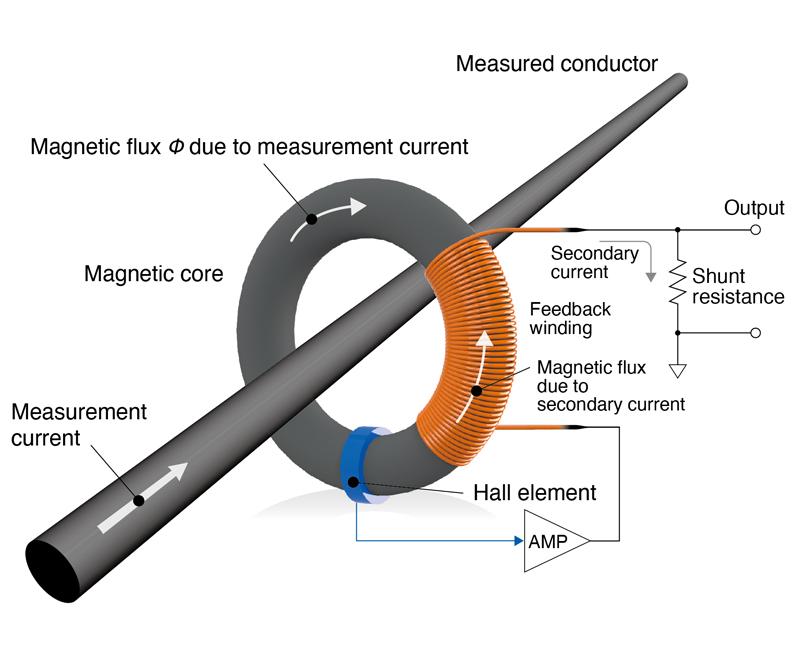Wideband Current Probe for Oscilloscopes
Hioki flat bandwidth current probes are best-in-class current sensors for use with Memory HiCorders and high performance oscilloscopes. The 3275 supports wide DC to 2 MHz bandwidth signals and 500A of continuous high input. The probe is designed with an electrostatic shield to reduce the effects of electric fields, making it ideal for measuring in environments in which the probe will be subjected to the effects of nearby magnetic fields, such as locations with high-voltage switching control equipment such as an inverter or motor.
Use with an instrument with a high input impedance of 1 MΩ or higher.
| 3275 | DC to 2 MHz, 500 Arms |
|---|
Wideband current sensors use the "zero flux method (Hall element detection type)" to measure. High-frequency currents are detected with the winding (CT method), and low frequency currents including DC are detected with the "Hall element."
● Hall element detection
Hall element detection is characterized by a simple structure and a sensor section that can easily be downsized. Hioki combines our own proprietary thin-film Hall elements with the zero flux method to deliver sensors that can conduct measurements over a wide range of frequencies, from DC to MHz bands
Ideal for waveform observations using a MEMORY HiCORDER or oscilloscope, Hall element detection achieves a high S/N ratio in the wideband range, making them particularly well-suited for design verification of electronic circuitry such as high-speed signal circuits.
● Zero flux method
The zero flux method is a measurement method used in both
high-accuracy and wideband sensors. As the principles the sensor is based on give it both low operating magnetic flux level and low insertion impedance, it is characterized by its lack of influence on the measured object and low instrument loss.
